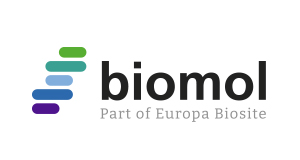Platelet Factor-4 (CXCL4), mouse recombinant (rmPF4)
Platelet Factor-4 (CXCL4), mouse recombinant (rmPF4)
Kategorie: Cytokines
Formulation: purified
Storage: -20°C
Weight: 8200 D
Purity: >97%
Description: Released during platelet aggregation. Neutralizes the anticoagulant effect of heparin because it binds more strongly to heparin than to the chondroitin-4-sulfate chains of the carrier molecule. Chemotactic for neutrophils and monocytes. Inhibits endothelial cell proliferation (By similarity). (www.uniprot.org) Recombinant mouse CXCL4 produced in E.coli is a single, non-glycosylated polypeptide chain containing 73 amino acids and having a molecular mass of 8.2 kDa. Platelet factor-4 is a 70-amino acid protein that is released from the alpha-granules of activated platelets and binds with high affinity to heparin. Its major physiologic role appears to be neutralization of heparin-like molecules on the endothelial surface of blood vessels, thereby inhibiting local antithrombin III activity and promoting coagulation. As a strong chemoattractant for neutrophils and fibroblasts, PF4 probably has a role in inflammation and wound repair. Oncostatin-A is a member of the CXC chemocinfamily. Human PF4 is used for the proof of heparin-induced thrombocytopenia. Furthermore it is used as an inhibitor in the angiogenesis during tumor therapy.
Formulation: purified
Storage: -20°C
Weight: 8200 D
Purity: >97%
Description: Released during platelet aggregation. Neutralizes the anticoagulant effect of heparin because it binds more strongly to heparin than to the chondroitin-4-sulfate chains of the carrier molecule. Chemotactic for neutrophils and monocytes. Inhibits endothelial cell proliferation (By similarity). (www.uniprot.org) Recombinant mouse CXCL4 produced in E.coli is a single, non-glycosylated polypeptide chain containing 73 amino acids and having a molecular mass of 8.2 kDa. Platelet factor-4 is a 70-amino acid protein that is released from the alpha-granules of activated platelets and binds with high affinity to heparin. Its major physiologic role appears to be neutralization of heparin-like molecules on the endothelial surface of blood vessels, thereby inhibiting local antithrombin III activity and promoting coagulation. As a strong chemoattractant for neutrophils and fibroblasts, PF4 probably has a role in inflammation and wound repair. Oncostatin-A is a member of the CXC chemocinfamily. Human PF4 is used for the proof of heparin-induced thrombocytopenia. Furthermore it is used as an inhibitor in the angiogenesis during tumor therapy.
| SKU | BOL97334.1 |
|---|---|
| Manufacturer | Biomol |
| Manufacturer SKU | 97334.1 |
| Package Unit | 1 mg |
| Quantity Unit | STK |
| Reactivity | Mouse (Murine) |
| Host | Escherichia Coli |
| Product information (PDF) | Download |
| MSDS (PDF) |
|

 Deutsch
Deutsch






